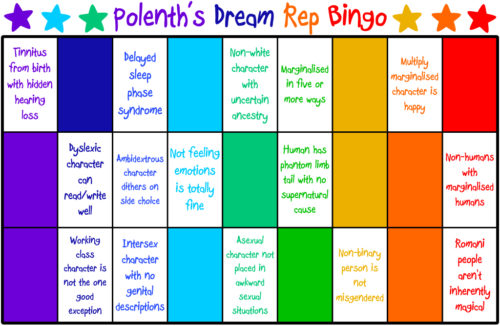 It’s the end of a difficult year, which looks set to become many difficult years. There’s been a lot of bad stuff going on politically. Some of it impacts me directly. Other things impact friends. That made it difficult to work, because anytime I did, something else would go wrong. That doesn’t mean that I did nothing during the year, but it does mean I focused on things I was able to do without having complete focus.
It’s the end of a difficult year, which looks set to become many difficult years. There’s been a lot of bad stuff going on politically. Some of it impacts me directly. Other things impact friends. That made it difficult to work, because anytime I did, something else would go wrong. That doesn’t mean that I did nothing during the year, but it does mean I focused on things I was able to do without having complete focus.
Last year, I was looking at diversifying where I made money. This didn’t really work out, in the sense of the new things I tried didn’t generate money. I did see success in expanding some of the things that were already working. I’ll talk about that in detail, as well as a bit of background about some of my choices going forward. The quick summary version will be at the end, for those who don’t need the nitty gritty details.
A piece of good news from this year is I now have a set of softboxes. These are lights for photography. Lighting has been a constant issue with my photography, as can be seen by the lighting issues in the various photos I’ve posted over the years (including the ones in this post, which were before I got the lights). The lights will be particularly useful for photographing larger art pieces.
Writing
Writing was the area that suffered the most this year, as I need to be settled and able to concentrate to get things done. This is especially true for final edits. I had intended to publish Werecockroach, my science fantasy novella. But the struggle with the final editing meant it never quite got there.
The second book in my novel series, Conduit, had a much better fate. I wrote quite a bit and sorted some timeline issues. Knowing that next year will be tough, I don’t want to be overly optimistic on release dates. I’m going to say it will most likely be released at the end of 2018 or the start of 2019.
This means not a lot has changed since last year. I do intend to stick to a basic cycle of one standalone (either novella or novel) and one series book. My hope is that going for unusual concepts for the standalones might get people talking about them. In other words, I hope the gimmick makes people look. I don’t have a lot of hope for the current series, but I would like to have it fairly robust with a few books before moving on to a more marketable series.
I did release a few new short stories on my Patreon, which is part of writing for the next collection. I don’t have a pending date on that, as it’ll happen when I have enough stories.
Art On Demand
I have art stores on Zazzle and Society6. Towards the end of the year, I had my first and only sale on Society6. I’ll still maintain that store, but it’s really all about Zazzle when it comes to actually making money.
My aim for Zazzle was to reach a thousand products by the end of the year, which I hit sometime in autumn. Each design is on between ten to forty different products. I have seen results from this, with my sales going up overall. I was paid before the holidays and will be paid again in January. I expect quieter times at the beginning of the year, as people recover from holiday purchasing, but I’m generally optimistic about sales.
I also tried out Zazzle’s embroidery system. This takes some investment, as the initial stitch files cost money (someone has to convert the image into stitches for the embroidery machine). I had one success and one failure. My blue jay design made a nice stitch file. I did edit it a bit before submitting it, to remove some of the fine detail, and it converted just fine. I sold a few things with it on, which paid back the stitch file cost. I’d likely have sold more, but Zazzle halted embroidery product sales for a short time due to the company moving to new premises.
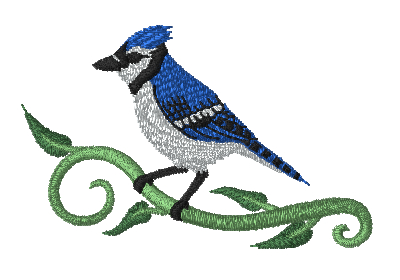
Image Caption: A preview of a stitch file, showing the stitch placement of an embroidered blue jay perched on a green vine.
The failure was my pixel art mushroom. The resulting design had smooth lines, so didn’t resemble the original at all. The money was refunded, so nothing lost. Once embroidery production is running again, I’ll likely convert a smooth-lined cartoon mushroom design.
Until the end of December, I was feeling stable about how things were going. Then the takedown notices started. The first was because I had textspeak that included u2 (as in “you too”) as part of the message. The concern was that it might look like merchandise for U2 the band. It’s over-cautious, but I could see they might be playing it safe. I deleted the couple of products with it on and went on with things. Then on Christmas, one of my pixel mushroom products was taken down for copyright/trademark infringement. This is an original design and has been picking up sales, so this was much more of a concern. I responded. A few days later the product was put back.
I’ll never know exactly what happened. I know some people do targeted reporting around holidays to attack people, so it’s possible that happened. It does have a feeling of someone mass reporting everything to see what would stick, especially with the timing. Needless to say, that was all pretty stressful, but I’m glad the pixel mushroom is back.
Reviews
Reviewing has stayed about the same this year. Views have gone up a bit. I’m seeing more review requests coming in, which is a good sign that the blog getting some wider attention. The money earnt from Amazon Associates is about the same.
What hasn’t been so good is the mainstream book problem. I picked a fair few mainstream books when requesting thing to review. This has logical reasons behind it, as these books are the ones that initially get people to the blog. I also found I could link up these books with smaller titles by running themed Twitter threads of reviews. This raised the views on reviews of those smaller titles.
All of that is fine, but the chances of disliking those mainstream books was a lot higher. Such books are often good at that one area that matches the author’s identity, but offers plenty of punches to the face to everyone else. The sort of work I’m really hoping for, with a wider intersectional perspective, is difficult to get in those big titles with all the hype.
It doesn’t help that books that get hyped in the online book communities often get aggressively defended. I’ve mostly got away with it because my reviews are often a bit after the release date, so things have calmed a little, but I won’t stay lucky forever (I’d note that this sort of attack is still peanuts to the whole death threat thing of my old blog content, but I’d still rather not have the drama). It means I’ve learnt to pay attention to some other book bloggers in the worst possible way: if they love a book, it’s one to avoid reviewing.
There’s a silver lining to all this though, because those popular mainstream titles continue to get views long after the initial review. So next year, I’m going to take a bit of a break from popular books, and rely on the views from my older reviews. I’ll continue reviewing titles that I’ve already agreed to review. Anything new I pick up will be titles I’ve chosen and titles that come through authors sending review requests. I’ll make exceptions for something on the hype train that looks totally my thing, but the odds of that are pretty low.
I’m open to suggestions of books that people think I’d enjoy and they’d like to see reviewed. I did a book bingo of things I’d like to see in representation, and I’d mostly like science fiction and fantasy where romance isn’t the main focus. Basically, it’d be nice if I could have a year where reading is fun.
Patreon
Patreon has continued at about the same level as before. I’m now a few pledges above my website bill, so there’s a little more safety. Until the end of the year approached, I’d have said it was stable. Then there was a sudden announcement of fee changes that would have forced a lot of my patrons out. Patreon did change it back, but it meant uncertainty about whether it would continue to be viable. It’s still possible some people will leave, due to losing trust in the platform.
This is my least favourite way of generating money, because producing masses of content each month is considered normal for the platform. I can’t work that quickly, especially when it comes to writing. Being dyslexic does slow me down, but it happens in a way that isn’t obvious to outsiders. They see that I can write fluently, so assume it isn’t like trying to float rocks with the power of my mind to get my writing to that state.
I did try some ideas this year to counter that. One was a few work-in-progress posts. These didn’t generate any interest, so I don’t intend to do more of those (they still take time to put together, which I could spend on other things). Another was to make a special reward for the end of the year, which was generally well-received. I painted a series of art cards and sent one to each patron. Given that I had seven patrons at the time, this sort of personal reward was viable to do (I wouldn’t be painting up a hundred individual art cards).
Image Caption: A set of art cards for Patreon, displayed on a white cloth with silver spots. The series has a central figure drawn in black ink. The figure is red with uneven white polka dots, painted with red watercolour. The background is white with red polka dots. The subjects are: a squid, a unicorn, an owl, an elephant, a leopard danio fish, oyster mushrooms, and a fly agaric mushroom. Click for a larger version of the image.
My general conclusion is that Patreon is not a good platform for me. I’m better at producing occasional big rewards, rather than multiple smaller rewards. My regular content is my reviews, but few people see the reviews as a reward. However, I don’t have a better alternative, so here I am.
Other Things
One thing I tried last year was a new wishlist. This went about as well as last time: only family bought things from the list. I removed most of the links to it, on the basis that a static wishlist is a lot like a news section that never updates. It creates the impression of being inactive. I know wishlists work well for some reviewers, as a way to get books that otherwise can’t be requested. It didn’t work out for me.
The list is still there and public, so I have it should there be a need for it sometime.
I’ve tried to keep my Twitter account on the light side this year. I figured people would see the news, so they didn’t need me to be the news. I posted my baking from Hallowe’en and the winter holidays, along with updates about the birds and pets.
Skip to the End
It’s been a difficult year for writing, as I need a calm environment to work on it. The novella Werecockroach will be out next year. The second book of the Bigfoot Mysteries, Conduit, is aimed for the end of 2018 / start of 2019. It was a good year for art, with my sales at Zazzle increasing. Patreon is about the same and I gave art cards to my patrons at the end of the year. I had a scare with both Patreon (with sudden fee change announcements) and Zazzle (multiple product takedowns), which demonstrates why I’m always looking for other sources of income to add to the mix.
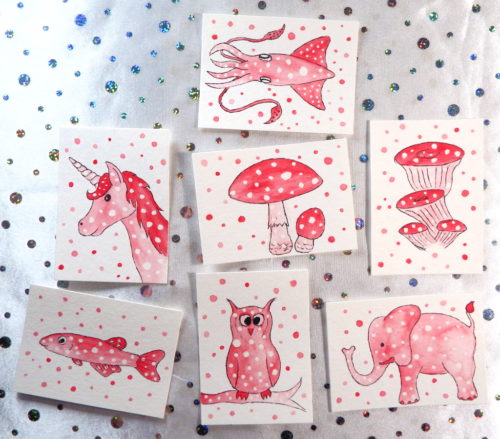
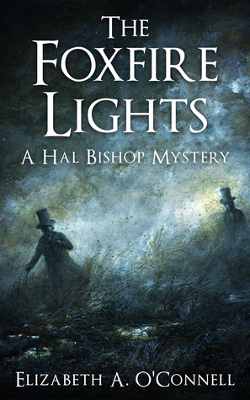 Series:
Series:  First Published: 5th October, 2017
First Published: 5th October, 2017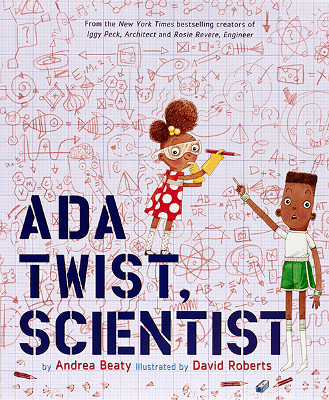 First Published: 6th September, 2016
First Published: 6th September, 2016